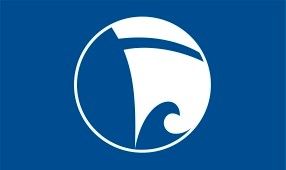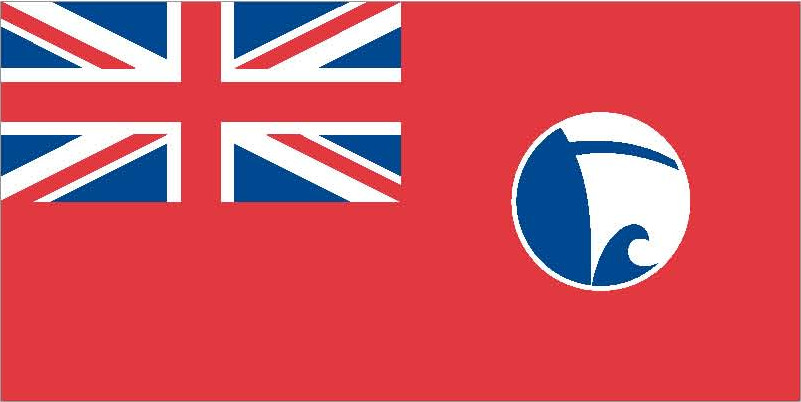Previous names
- 1904 - 1969 Happy Return
- 1969 Britannia
Details
Construction
Dimensions
History
HAPPY RETURN (FE 5) was built at Kitto’s Yard, Porthleven, as a Mounts Bay pilchard driver for John Warman Saunders of Folkestone to replace his previous Cornish lugger GOOD INTENT which was lost in a gale off Folkestone in 1904. All three crew (the owner and his two sons John and Edward) were saved and the name of the new lugger celebrated that fact. In February 1916 an 8hp Kelvin auxiliary engine was fitted to HAPPY RETURN. On 22 February 1929 John Thomas Warman Saunders took over ownership from his father, who had died.
From 9th June- 14th June 1940, HAPPY RETURN was requisitioned from John Saunders for use in Operation Cycle, the evacuation of Allied troops from Le Havre, in the Pays de Caux of Upper Normandy from 10–13 June, towards the end of the Battle of France.
On 18 July 1941 John Fagg of Folkestone became the new owner and amongst the crew were believed to be Bob and Harry Featherbe. She was sold again on 25 August 1948 to W M Grayling of Folkestone.
On 5 September 1963 HAPPY RETURN was sold to William Gale of Folkestone and extensively refitted. A 46hp Ailsa diesel was fitted, the sheerline was raised with new top strakes and covering boards, the masts were shortened and raised onto a tabernacle on the deck, and the mizzen was moved aft to accommodate a wheelhouse. On 17 February 1969 she was sold to Alan Rake of Kings Lynn, and registered there as LN 224 with a new name - BRITANNIA. On 16 January 1971 Peter Barrett of North Cheam, Surrey, bought her. A new oak keel and oak transom were fitted, and some deck beams and planks were renewed. A year later a Parsons Barracuda 105hp diesel was installed. In 1987 BRITANNIA went ashore in a storm and was an insurance write-off, but Peter Barrett bought her back and reinstated her.
In 1998 she finished fishing and her registration was closed on 15 January (at this time she was the oldest registered fishing vessel in the UK). The lugger was handed over by the Ministry of Food and Fisheries to North East Lincolnshire Borough Council for the National Fishing Heritage Centre in Grimsby, which was interested in her preservation. She was passed to the Mounts Bay Lugger Association (MBLA), a group of local enthusiasts, and returned to Penzance harbour on 4 May 1998. HAPPY RETURN was restored by MBLA to her original appearance and was re-launched at Penzance on 10 March 2003. After fitting out the first sea trials took place on 16 August 2003.
Source: Historic Sail, Britain's surviving working craft, Paul Brown, the History Press.
Significance
1. What is the vessel’s ability to demonstrate history in her physical fabric?
Evidence for designs, functions, techniques, processes, styles, customs and habits or uses and associations in relation to events and people. How early, intact or rare these features are may impact on significance.
HAPPY RETURN FE5 was built in Porthleven, Mounts Bay, Cornwall by the well-established builder Richard J. Kitto in 1904. She was constructed of carvel planking on sawn oak frames and fitted with a dipping lug rig. HAPPY RETURN was classed as a West Cornwall lugger, which would usually have been double ended. However, being destined for work on the East Coast, she was given the straight stem and transom stern which were Kitto’s trademark for craft of this kind, also creating more room down below. In 1972, a new oak keel and oak transom were fitted, and some deck beams and planks were renewed. Conservation work has subsequently been undertaken with as little alteration to the original fabric as possible and no changes to her hull shape. Much of the original design survives and later additions, such as the wheelhouse and raising of the sheerline, have been removed or reversed. Her masts which were cut down have been restored to their original length and she is rigged to her original sail plan with an added auxiliary engine. All original features specific to the design have been recreated where historical evidence exists, including the fish hatch and scottles. The deadwoods and most of the frames are original, as is over 50% of the hull. HAPPY RETURN continues to be maintained in the materials from which she was made, predominantly oak, with Douglas fir masts. Some minor adaptations have been implemented to comply with current passenger carrying regulations.
2. What are the vessel’s associational links for which there is no physical evidence?
Associations with people or places. Off-ship research.
HAPPY RETURN has strong associations with the fishing communities of Folkestone where she spent her first 65 years. Having been sailed by men from the leading local fishing families, she represents a snapshot of coastal life in Folkestone and more widely, South Kent at a time when many boats in the fleet were Cornish built. She later worked out of Kings Lynn and holds a place in the maritime memories of Swanage where she spent a further 27 years undertaking fishing and salvage work. HAPPY RETURN thus reflects the history and reach of Cornish boatbuilding, where boats were built for fishing fleets around the British Isles, as far afield as Lerwick, Lowestoft, Kinsale and Jersey, and influenced the ‘nickeys’ from the Isle of Man. She was the oldest registered fishing boat in the UK fleet at the time of her decommissioning in 1998 and the Ministry of Agriculture, Fisheries and Food recognized her importance, deciding she should be saved as a vessel of historic merit. She also has international significance as a Dunkirk Little Ship, having taken part in Operation Cycle in June 1940, which saw the evacuation of 11,000 allied troops from Le Havre and 3,321 from St Valery-en-Caux. Today, HAPPY RETURN regularly attends traditional boat festivals in Southern Britain and France. She is featured in the film ‘Red Sails in the Bay’, in books such as Folkestone’s Fishing Industry Past and Present, The Chatham Directory of Inshore Craft, Historic Sail, Britain’s Surviving Working Craft, and in articles from the Folkestone Herald, The Cornishman and Fishing News. Her history is well documented through photography, log books, receipts for conservation work and her lines plan, as well as in her registration document, oral history recordings and crew lists. HAPPY RETURN was recorded on the National Register of Historic Vessels in 2022.
3. How does the vessel’s shape or form combine and contribute to her function?
Overall aesthetic impact of the vessel, her lines, material she was built from and her setting. Does she remain in her working environment?
HAPPY RETURN was designed to operate economically, with a stripped-down crew. Minimal rigging was necessary and her design was safe and stable. Her dipping lug provided a huge working area that could be cleared when fishing. Using legs which bolt to her sides, HAPPY RETURN can stand upright when beached and still retains these along with many other original features. Her design was appropriate for the sheltered harbours of the West Coast of Cornwall which gave her a greater speed than vessels from the North Coast. After many incarnations long lining, trawling, potting and undertaking salvage work, HAPPY RETURN has been restored to her original sailing lines fulfilling an important role within local history as a working, Mount’s Bay, dipping lug, mackerel driver; a beautiful example of Cornish sailing luggers. With her traditional red sails, she is in regular use for the greater part of each year. Moored in Penzance Harbour and visiting other local areas, HAPPY RETURN remains in her working environment and can be seen alongside more modern fishing vessels giving context to the history of these ports.
Sources:
AF Taylor, JW Gale & FH Bond 2020 - ‘Folkestone’s Fishing Industry Past and Present,’ Folkestone Fishing Heritage and History Museum. p65
M. Smylie 1999 - Traditional Fishing Boats of Britain & Ireland, Amberley Publishing p202
Anon 1991 - Manx Sea Fishing 1600 – 1990’s Resource Book Manx Heritage Foundation.
P. Brown 2013 - Historic Sail, Britain’s Surviving Working Craft, The History Press p27 - 29
Ed B Greenhill & J Mannering 1997 - ‘The Chatham Directory of Inshore Craft’ – Traditional Working Vessels of the British Isles. P107 & 164
J. E. March 1969 - ‘Sailing Drifters’ – The Story of the Herring Luggers of England, Scotland and the Isle of Man. David & Charles
National Historic Ships 2010 - Conserving Historic Vessels, Understanding Historic Vessels vol. 3. P130, 141, 144 & 156
Author:
The History Officer, MBLA, March 2025
Grants
-
February 2025
A Sustainability Grant of £1,000 towards remedial work was made from the Strategic Development Fund of National Historic Ships UK, supported by Winter & Co Marine Ltd
Sources
Association of Dunkirk Little Ships website.
Own this vessel?
If you are the owner of this vessel and would like to provide more details or updated information, please contact info@nationalhistoricships.org.uk




